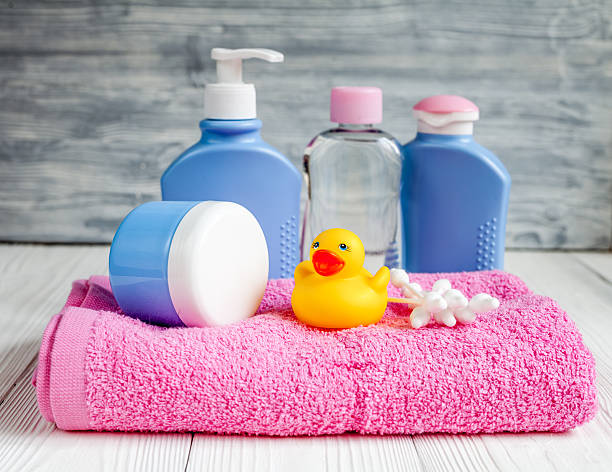According to Organic Market Research report, “Latin America Surfactant Market — Global Industry Size, Share, Trends, Competition Forecast & Opportunities, 2032F”, the Latin America Surfactant Market stood at USD 6.78 million in 2024 and is projected to grow with a CAGR of 7.9% through 2032. Surfactants are surface-active agents, chemicals that inferior the surface tension among different substances, such as liquids and solids or two immiscible liquids. These compounds are important in blending substances that typically do not mix, like oil and water. Surfactants entail hydrophilic (water-loving) and hydrophobic (water-repelling) parts, enabling them to cooperate efficiently with water and oil. This unique structure enables the introduction of emulsions or foams. Commonly found in household and industrial cleaning products, including detergents, soaps, and shampoos, surfactants support breaking down and eliminating grease and dirt.
In addition, surfactants play an important role daily, being present in different products including toothpaste, personal care items, cosmetics, and pharmaceuticals. These products are often dependent on surfactants as important active ingredients. The market for such items is considerable and continues to rise. However, concerns regarding the non-biodegradable nature of traditional surfactants and their tendency to collect in the environment have driven rising requirements for bio-based and green alternatives. These sustainable surfactants, resulting from microbial sources, are generally considered more sustainable and environmentally harmless than their traditional counterparts.
Detergents are typically mixtures of surfactants chiefly utilized for cleaning determinations, accessible in different concentrations. They often comprise alkylbenzene sulfonates, compounds with soap-like properties but greater solubility in hard water. Detergents are classified based on their ionic nature into anionic, cationic, and non-ionic types. Soaps conferred in this context are primarily utilized for washing and laundry tasks. In Mexico, the laundry care market is steadily mounting, propelled by growing awareness of household hygiene, which is projected to boost the market during the forecast period. Based on the data of INEGI (National Institute of Statistics, Geography and Informatics), bar soap production across Mexico reached approximately 22.38 million units during 2021, reaching a 3% growth from 21.72 million units during 2020. Similarly, data from the National Institute of Statistics and Census (Argentina) show that soap production for toilet and laundry purposes touched 6,547 tons during July 2022, a 6% rise compared to 6,173 tons in June 2022. Additionally, the production of detergents and cleaners (including bleach) in Argentina during the first 7 months of 2022 totaled approximately 489.63 thousand tons.
Urbanization and rising purchasing power across Latin American countries are fueling the demand for premium consumer goods, especially in the personal care and household segments. The increased focus on hygiene and cleanliness, heightened by recent global health events, has significantly boosted the consumption of cleaning products, positively impacting the Latin America surfactants market. Additionally, the cosmetics and personal care industry in the region, particularly in Brazil and Argentina, is experiencing rapid growth. Consumers are drawn to improved and specialized products, where surfactants play a critical role in improving texture, spreadability, and shelf life, further propelling their popularity and require.
Press Release: https://www.organicmarketresearch.com/press-release/latin-america-surfactant-market
The Latin America Surfactant Market is segmented into Type, Origin, and Application.
Based on the Application, personal care dominates the market growth owing to increased urbanization and growing disposable incomes have led to a greater demand for premium personal care products. Consumers are becoming more conscious of hygiene and personal grooming, propelled by the requirement for surfactant-rich products including shampoos, body washes, and facial cleansers. There is an increasing reference for advanced and specialty products, such as sulfate-free and eco-friendly formulations, which still dependent on innovative surfactant technologies.
Based on region, Brazil holds the largest market share owing to due to its robust growth and significant investments across key industries, including household and commercial cleaning, agriculture, food processing, and personal care, all of which rely heavily on surfactants. As the largest market in Latin America, Brazil also ranks among the top global players in cosmetics. According to Statista, Brazil’s beauty and personal care market is projected to generate USD 23.29 billion in 2023, with an annual growth rate of 7.30%. In agriculture, surfactants are crucial in enhancing the efficiency of pesticides and insecticides. Data from the Ministry of Agriculture, Livestock and Food Supply indicate that Brazil’s agribusiness sector exported over USD 148.3 billion in goods and services in 2022, a 23% increase compared to 2021. Key exports such as soybeans, meat, and forestry products. The food and beverage industry also relies on surfactants as additives, processing aids, and solubilizers for water-insoluble materials in beverages.
According to the Brazilian Association of Food Industries, the sector noted BRL 923 billion (USD 171.19 billion) in net sales during 2021, up from BRL 789 billion (USD 146.4 billion) during 2020. Moreover, Brazil’s rich biodiversity positions it as a hub for biosurfactant research, offering different opportunities to discover cost-effective and highly productive microorganisms for biosurfactant production.
Contact Us:
Mob : +91 9319642100
Noida One Tower Sec 62 Noida 201301
Sales : sales@organicmarketresearch.com
Website : https://www.organicmarketresearch.com














